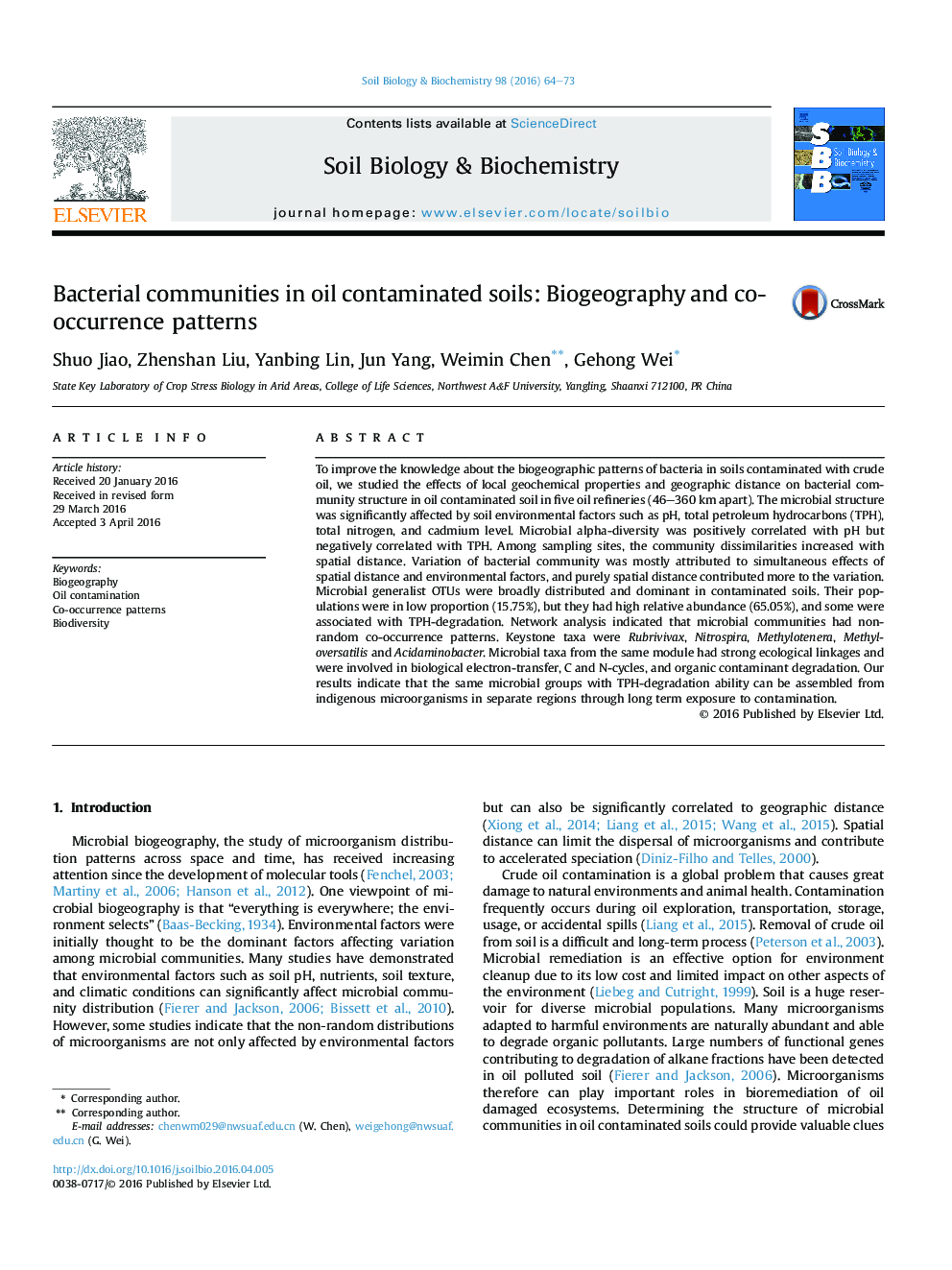| Article ID | Journal | Published Year | Pages | File Type |
|---|---|---|---|---|
| 8363532 | Soil Biology and Biochemistry | 2016 | 10 Pages |
Abstract
To improve the knowledge about the biogeographic patterns of bacteria in soils contaminated with crude oil, we studied the effects of local geochemical properties and geographic distance on bacterial community structure in oil contaminated soil in five oil refineries (46-360Â km apart). The microbial structure was significantly affected by soil environmental factors such as pH, total petroleum hydrocarbons (TPH), total nitrogen, and cadmium level. Microbial alpha-diversity was positively correlated with pH but negatively correlated with TPH. Among sampling sites, the community dissimilarities increased with spatial distance. Variation of bacterial community was mostly attributed to simultaneous effects of spatial distance and environmental factors, and purely spatial distance contributed more to the variation. Microbial generalist OTUs were broadly distributed and dominant in contaminated soils. Their populations were in low proportion (15.75%), but they had high relative abundance (65.05%), and some were associated with TPH-degradation. Network analysis indicated that microbial communities had non-random co-occurrence patterns. Keystone taxa were Rubrivivax, Nitrospira, Methylotenera, Methyloversatilis and Acidaminobacter. Microbial taxa from the same module had strong ecological linkages and were involved in biological electron-transfer, C and N-cycles, and organic contaminant degradation. Our results indicate that the same microbial groups with TPH-degradation ability can be assembled from indigenous microorganisms in separate regions through long term exposure to contamination.
Related Topics
Life Sciences
Agricultural and Biological Sciences
Soil Science
Authors
Shuo Jiao, Zhenshan Liu, Yanbing Lin, Jun Yang, Weimin Chen, Gehong Wei,
